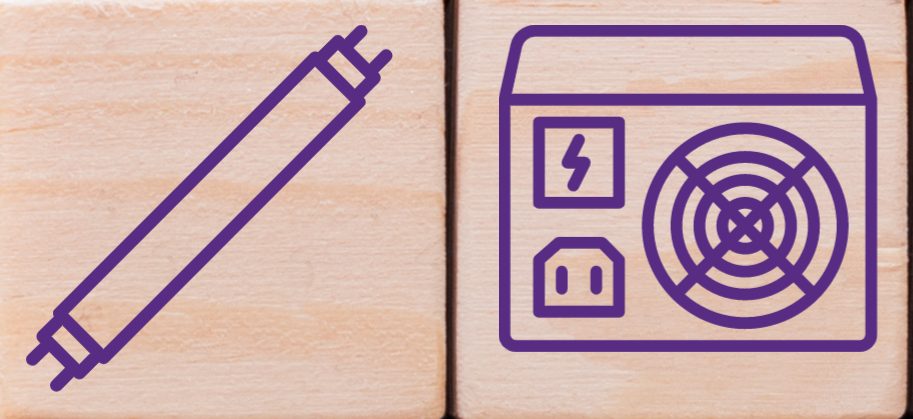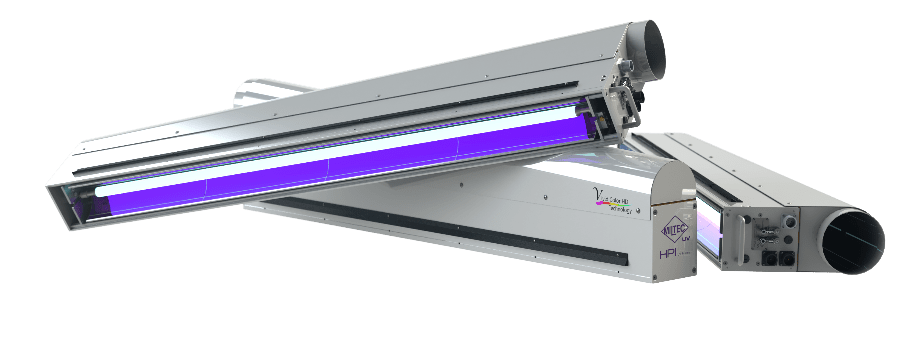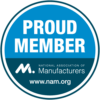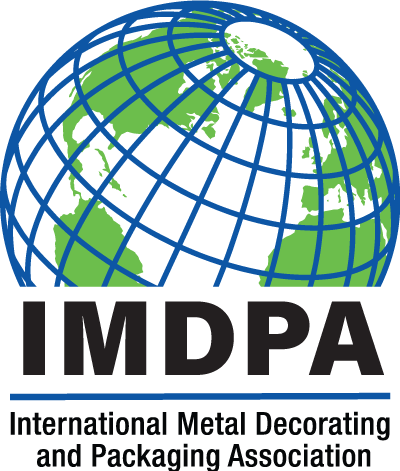UV curing is a process in which ultraviolet (UV) light is used to cure or dry coatings, inks, adhesives, and other materials. The UV light triggers a chemical reaction that causes the material to harden or cure, resulting in a durable and long-lasting finish. For more details, enjoy our blog Understanding Ultraviolet Light & UV Curing.
What are the benefits of UV curing?
UV curing is an environmentally friendly technology that offers several benefits, including fast cure times, improved productivity, reduced energy consumption, and lower costs compared to traditional thermal drying applications. UV curing produces high-quality, scratch-resistant, and chemical-resistant coatings that are ideal for a range of applications.
How does UV curing work?
UV curing works by using high-intensity UV light to activate photoinitiators in the coating or ink. These photoinitiators then generate free radicals that start a chain reaction, causing the material to cure or harden. Learn more by reading our blog, How Does UV Curing Work?
What types of materials can be cured using UV light?
UV light can be used to cure a wide range of materials, including coatings, inks, adhesives, resins, and composites. These materials can be applied to various substrates, such as paper, plastic, metal, and wood.
What is the difference between UV curing and traditional curing methods?
The main difference between UV curing and traditional curing methods, such as thermal or air drying, is that UV curing uses light to initiate the curing process, whereas traditional methods rely on heat, air, or chemical reactions. UV curing is typically faster, more efficient, and produces higher quality finishes than traditional methods.
Are there any safety concerns associated with UV curing?
Yes, UV curing can pose some safety concerns if proper precautions are not taken. UV light can be harmful to the skin and eyes, and prolonged exposure can cause skin damage and eye injuries. It is important to have proper light shielding and wear appropriate personal protective equipment, such as UV-blocking glasses and gloves, when working with UV curing equipment.
What types of UV curing equipment are available?
There are several types of UV curing equipment available, including microwave, arc lamps and LED curing systems. While UV LEDs are ideal for low-heat curing, microwave and arc lamp systems are designed for larger applications and can be customized to meet specific requirements.
How can I optimize UV curing for my application?
To optimize UV curing for your application, you should consider factors such as substrate, coating or ink formulation, UV intensity, and cure time. It’s important to perform UV cure testing to determine a process window specifying UV energy and peak irradiance requirements in order to achieve proper cure.
How do I maintain my UV curing equipment?
To maintain your UV curing equipment, you should regularly clean and inspect lamps, bulbs, reflectors, air supply, and much more to ensure they are functioning properly. You should purchase replacements as needed and follow the manufacturer’s instructions for operation and maintenance.
What industries use UV curing?
UV curing is used in a wide range of industries, including printing, packaging, optical fiber, flooring, finishing wood cabinets, panels & profiles, solar window films, metal decorating, decorating on cups, tubes and other plastic containers, protective finishes for metal pipes/tubes, conformal coatings for printed circuit boards, automotive head lamps and interior trim, and luxury vinyl tile. UV curing is ideal for applications that require high-quality, fast-drying, and durable finishes.
Is UV curing environmentally friendly?
Yes, UV curing is environmentally friendly, as it produces no volatile organic compounds (VOCs) and uses less energy than traditional curing methods. UV curing also requires less space and produces less waste, making it a sustainable choice.
What are the advantages of UV curing compared to other curing methods?
UV curing has several advantages over other curing methods, including faster curing times, higher throughput, improved product quality, and reduced energy consumption. UV curing also has a lower environmental impact than solvent-based curing methods.
How do I determine the optimal curing conditions for my application?
The optimal curing conditions for your application depend on factors such as the type of substrate, the UV ink or coating used, the curing equipment, and the desired cure speed and quality. It’s recommended to work with a UV system provider who can help you optimize your curing process and recommend the best equipment and conditions for your application. Learn more about Miltec’s UV System Performance Check.
What are the most common issues that can occur during UV curing?
The most common issues that can occur during UV curing include incomplete curing, over-curing, and uneven curing. These issues can be caused by factors such as improper placement, insufficient UV intensity, incorrect curing time, or improper substrate handling. In addition, UV lamps produce IR output that can potentially overheat and damage the substrate. So it is important to optimize the UV curing process with a UV system that produces maximum UV intensity and energy output to maximize cure speed, as well as using a UV system that will minimize the amount of IR output. Addressing these issues promptly will help avoid quality problems and ensure consistent results. Miltec’s Applications Lab scientists are experts in identifying and solving UV curing issues.
How can I ensure the safety of UV curing operations?
UV curing operations require appropriate safety measures to protect workers from UV radiation exposure. This can include wearing personal protective equipment such as gloves, goggles, and protective clothing, and implementing engineering controls such as UV shields and interlocks on equipment. It’s important to follow established safety protocols and guidelines to prevent UV-related health risks.
How do I tell what type of UV is best for my application?
The choice depends on factors such as the size and complexity of the application, the need for high peak irradiance and low heat output, as well as, what wavelength range is best for that application. Coating suppliers can make suggestions and testing is often performed with onsite or in a laboratory setting working with the UV system manufacturer. Should you be using UV curing? Read our blog UV Curing – Is it Right for You?
How can I ensure consistent curing results across my production line?
To ensure consistent curing results across your production line, it’s important to first perform the upfront testing and other work necessary to select and specify a UV system that will meet the curing requirements for that application. and production requirements. In order to maintain uniform UV intensity and exposure time, its important to perform the proper preventive maintenance essential to help ensure consistent UV output and performance of the UV system. This can be achieved by regularly calibrating and inspecting your curing equipment, monitoring your UV output with a radiometer, and optimizing your curing process parameters for consistency.




 简体中文
简体中文 Nederlands
Nederlands English
English Français
Français Deutsch
Deutsch हिन्दी
हिन्दी Italiano
Italiano 日本語
日本語 한국어
한국어 Português
Português Русский
Русский Español
Español ไทย
ไทย